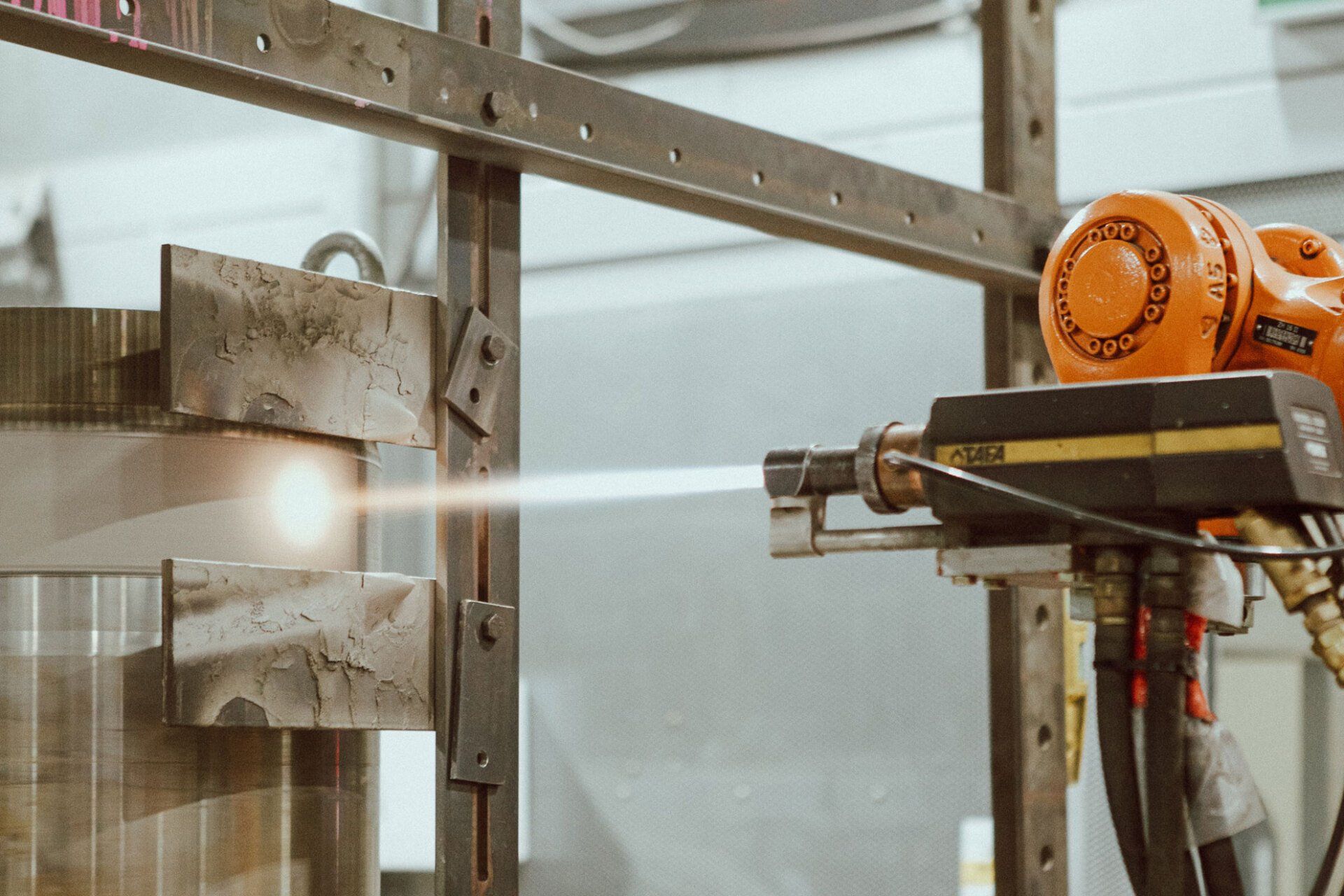What is a HVOF (High Velocity Oxygen Fuel) coating?
What is hvof thermal coating?
HVOF or High-Velocity Oxygen Fuel is a thermal spray coating process. Thermal spray coatings are created by accelerating small particles of heated metal or ceramic towards the work surface so that it mechanically deforms and bonds resulting in a dense coating.
What is the purpose of HVOF (High-Velocity Oxygen Fuel) coating?
Thermal spray coatings are used to improve or restore the surface of a component. Using thermal spray, we can apply coatings to a wide range of materials utilizing a wide range of coating types. We can restore the dimensional accuracy of metallic parts and cost-effectively improve wear resistance, corrosion resistance, thermal conductivity, and magnetic permeability.
HVOF coatings are one of a range of thermal spray coating solutions that we provide to our customers.
Invented in the 1980s by Jim Browning, HVOF coatings work by injecting an oxygen-kerosene mixture into a combustion chamber within the gun, this is then ignited, and the gases are accelerated through the nozzle. The powder is injected into the combustion zone, partially melted, and propelled onto the workpiece.
See figure 1. For a simplified cross-section of an HVOF gun below.
We spray several different materials using HVOF but the most common materials that we spray are variations of tungsten carbides and chrome carbides. These combinations provide dense, wear-resistant and corrosion-resistant coatings.
What are the advantages of HVOF coatings?
There are several different advantages that HVOF coatings have over other thermal spray coatings, laser claddings and hard chrome.
Low Porosity, Low Oxide Coatings
- Due to the impact velocities that are achieved by the in-flight particles, HVOF coatings have comparatively low porosity levels. Lower oxide levels are also achieved in the coating due to the lower in-flight exposure time to oxygen – the particles spend very little time in the flame.
Wear Resistant Coatings
- Because of the low porosities and low oxide levels that are achieved, HVOF coatings are also typically more wear resistant than the same materials sprayed by other methods. This lower porosity, lower oxide coating helps to increase wear resistance for many different component types.
- HVOF is also capable of spraying coatings with significantly higher levels of wear resistant particles, such as tungsten carbide, when compared to other coating systems. The higher the percentage of wear resistant particles like tungsten carbide, the more wear resistant a coating becomes. HVOF can achieve 88% tungsten carbide in a coating. In comparison, laser can only achieve 60% tungsten carbide.
Corrosion Resistant Coatings
- Because of the low porosity of the coating (less than 1%) and the low oxide content, HVOF coatings are more corrosion resistant than other coating methods.
Safer Coatings
- Other coatings, specifically Hard Chrome coatings require the very toxic, carcinogenic hexavalent chromium to manufacture them. HVOF coatings on the other hand do not produce toxic chemicals and are much safer not only for our thermal spray technicians but also the environment.
What are the limitations of HVOF coatings?
One limitation of HVOF coatings is the need to have a direct line of sight whilst spraying. It is not possible to spray internal surfaces on small cylindrical components to any significant depth. This is due to the coating being most efficiently deposited with the gun perpendicular to the surface to be coated. As the coating angle decreases, so does deposit efficiency. Parts typically need to be sprayed no more than 30° from perpendicular with nothing in the way of the particle stream.
When would HVOF coatings be the right choice?
HVOF coatings are a great option for many different types of components. In our workshop we see a lot of shafts, sleeves, spindles, rotors, mandrels, yokes, and rods come in for HVOF coatings due to the advantages it provides that are listed above.
Essentially HVOF coating will be suitable for a component if you have a line of sight for spraying and you are desiring to increase some of the following characteristics.
- Provide superior rebuild and salvage operations.
- Increase abrasion resistance.
- Increase sliding wear resistance.
- Increase resistance to fretting, galling or adhesive wear.
- Increase resistance to cavitation effects.
- Increase resistance to chemical attack.
- Increase control of oxidation and sulfidation.
- Increase atmospheric and high-temperature corrosion control.
In general, HVOF coatings are a much more wear-resistant coating than other options, which allows for longer component life cycles and that provides you with less downtime for critical machinery.
How can New Metal Surfaces help?
If HVOF coatings are something that you are interested in, speak with us today and we can work together on how we can best benefit your business using HVOF coatings.

WE'RE READY
If becoming a thermal spray technician is something that interests you, or you would like to know more, get in touch with us – we would love to hear from you.


